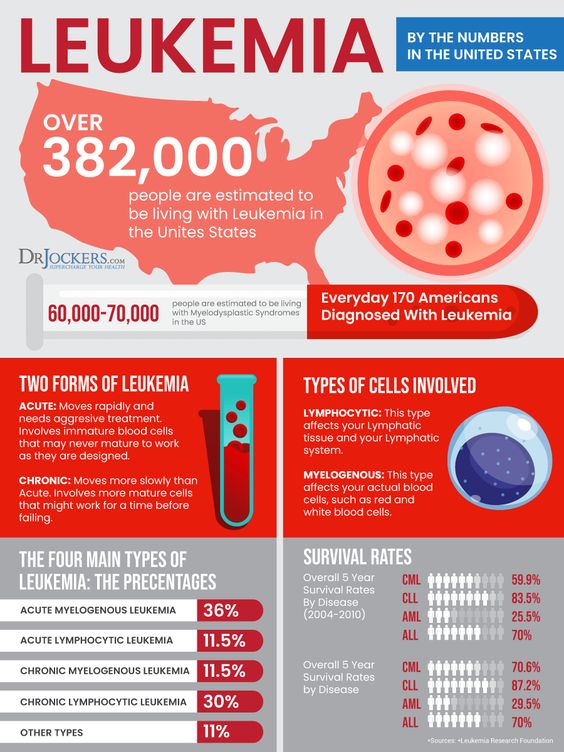Leukemia is a type of cancer that affects the blood and bone marrow, specifically the production of white blood cells. The treatment for leukemia varies depending on the type, the stage at which it is diagnosed, and the patient's overall health. This article provides an in-depth look at the types of leukemia, the treatment options available, and what you need to know if you or a loved one are facing a leukemia diagnosis.
Types of Leukemia
There are several different types of leukemia, each affecting blood cells differently. The four main types are:
Acute Lymphoblastic Leukemia (ALL): This type primarily affects children but can occur in adults. It progresses rapidly and affects immature lymphocytes (a type of white blood cell).
Acute Myeloid Leukemia (AML): This form of leukemia also progresses rapidly and affects immature myeloid cells, which are responsible for the production of various blood cells.
Chronic Lymphocytic Leukemia (CLL): CLL is a slower-progressing type of leukemia that primarily affects adults. It affects the lymphocytes, much like ALL, but tends to develop more gradually.
Chronic Myeloid Leukemia (CML): CML also develops slowly and affects the myeloid cells. It is more common in adults and may have a chronic phase followed by a more aggressive phase if left untreated.
Leukemia Treatment Options
Treatment for leukemia is often complex and multifaceted. The goal is to eliminate the cancerous cells, restore normal blood cell production, and help the patient regain their health. The specific treatment approach depends on factors such as the type of leukemia, the patient's age, the stage of the disease, and overall health. Here are the main treatment options:
Chemotherapy: Chemotherapy is one of the most common treatments for leukemia. It involves using powerful drugs to kill cancer cells or stop them from dividing. Treatment may be given in cycles, allowing the body to recover between rounds of chemotherapy. Depending on the type of leukemia, chemotherapy may be used alone or in combination with other treatments.
Radiation Therapy: Radiation therapy uses high-energy rays to target and destroy leukemia cells. It is often used in specific areas, such as the spleen or lymph nodes, or to prepare the body for a bone marrow or stem cell transplant.
Targeted Therapy: Targeted therapy involves drugs that specifically target the abnormal proteins or genes driving the growth of leukemia cells. This type of therapy tends to have fewer side effects than traditional chemotherapy, as it focuses directly on the cancer cells rather than affecting healthy cells.
Immunotherapy: Immunotherapy is designed to boost the body's natural immune system to fight cancer. Drugs like monoclonal antibodies or CAR-T cell therapy can help the immune system recognize and attack leukemia cells more effectively.
Bone Marrow or Stem Cell Transplant: For some patients, a bone marrow or stem cell transplant may offer the best chance for a cure. This procedure replaces the patient's diseased bone marrow with healthy stem cells, which can generate new blood cells. Transplants can be autologous (using the patient's own cells) or allogeneic (using donor cells).
Clinical Trials: Participation in clinical trials can give patients access to cutting-edge treatments that are not yet widely available. These trials test new drugs, therapies, or combinations of treatments that may be more effective than current options.
Factors Affecting Treatment
Several factors influence the treatment approach for leukemia patients:
Age and Health: Younger, healthier patients may tolerate more aggressive treatments such as high-dose chemotherapy or bone marrow transplants. Older patients or those with other health issues may need less intensive therapies.
Type and Stage of Leukemia: The specific type of leukemia and how far it has progressed will guide treatment. Acute leukemia generally requires prompt and aggressive treatment, while chronic forms may allow for a more gradual approach.

Genetic Mutations: Some forms of leukemia are driven by specific genetic mutations. Testing for these mutations can help doctors determine the most effective targeted therapies.
Response to Treatment: Treatment plans may be adjusted based on how well the patient responds. If leukemia cells do not respond to initial therapies, alternative treatments or experimental options may be considered.
Side Effects and Management
Leukemia treatments can have significant side effects, including fatigue, nausea, hair loss, infection risk, and low blood cell counts. Managing these side effects is a critical part of leukemia care. Patients may receive supportive treatments, such as growth factors to boost blood cell production, antibiotics to prevent infection, or medications to control nausea and other symptoms.
The Importance of Follow-Up Care
Once treatment is complete, follow-up care is essential. Regular check-ups and monitoring ensure that the leukemia is in remission and that any signs of relapse are detected early. Follow-up care may include blood tests, bone marrow biopsies, and imaging studies. Additionally, long-term management of any treatment side effects or complications is an integral part of post-treatment care.











